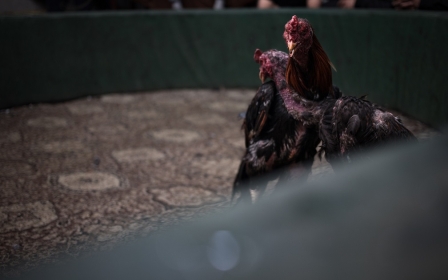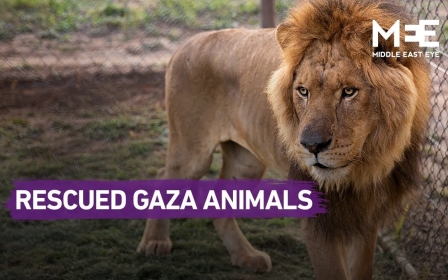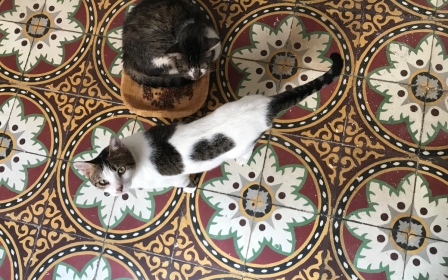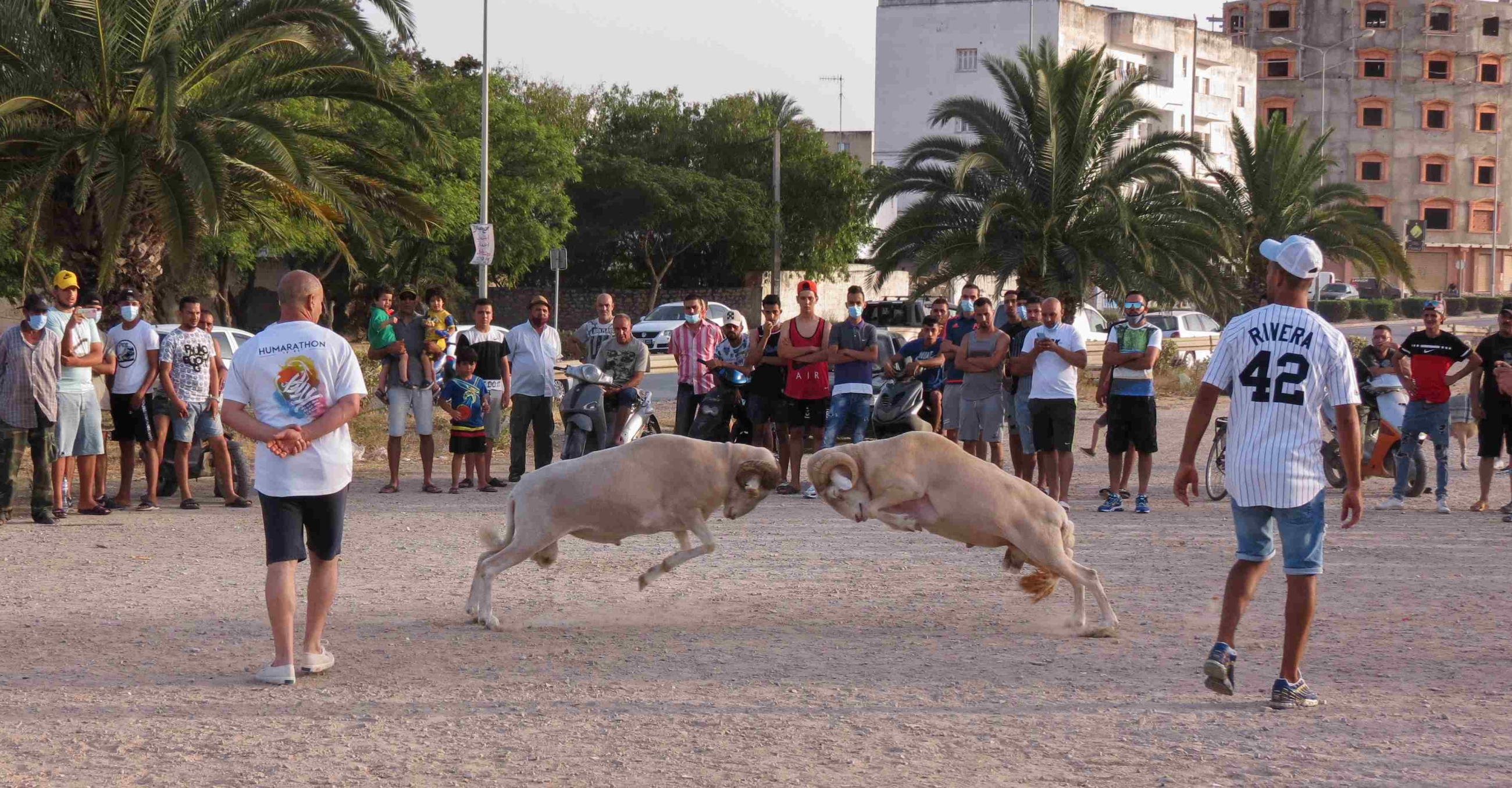
In pictures: Ram-fighting in Tunis suburbs continues despite calls for ban
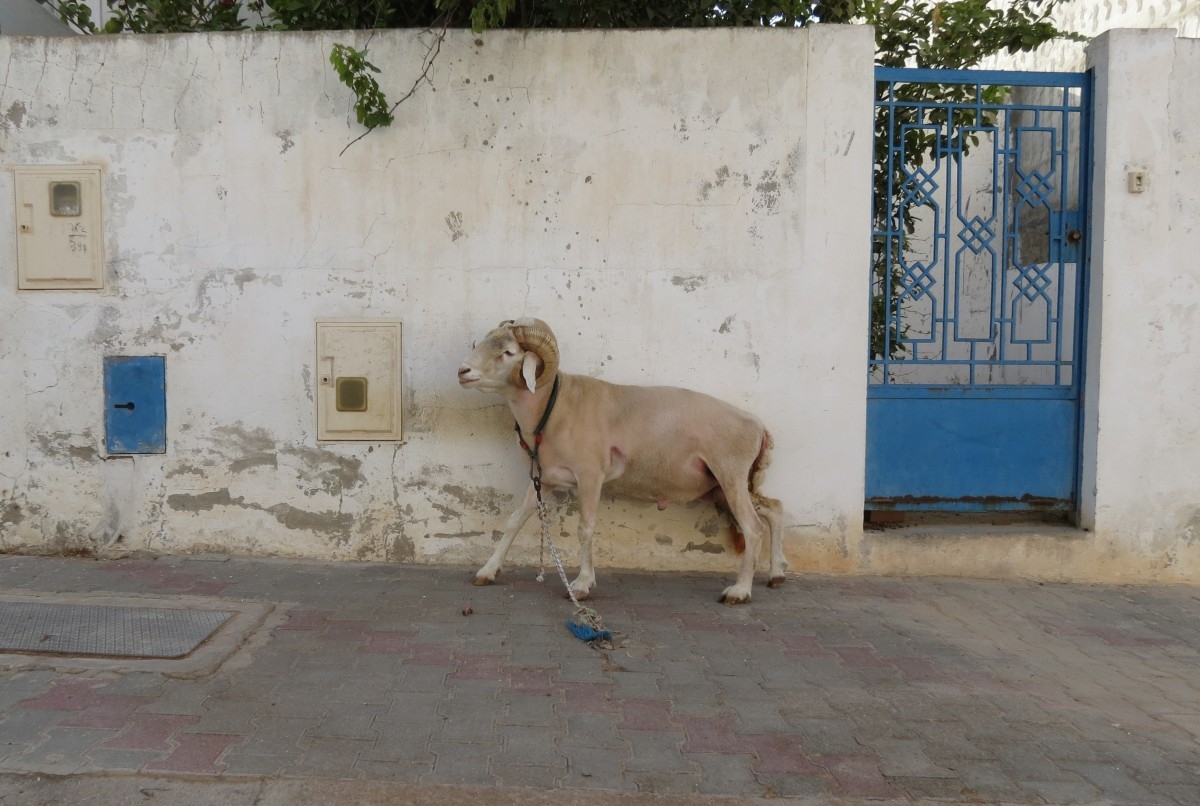
An unmistakable odour of cattle wafts through the alleyways of the Tunisian town of Mohammedia, around 15 kilometres south west of the capital. In the warehouses of the town, which is dotted with unfinished buildings and streets with no names, rams are kept for breeding and ram-fighting, a popular sport in a number of Tunisian suburbs. Fights mostly take place before the Muslim festival of Eid al-Adha, which is usually marked with the sacrifice of an animal, including rams, although animal combat is not condoned in Islam. (All photos by Jacopo Lentini)
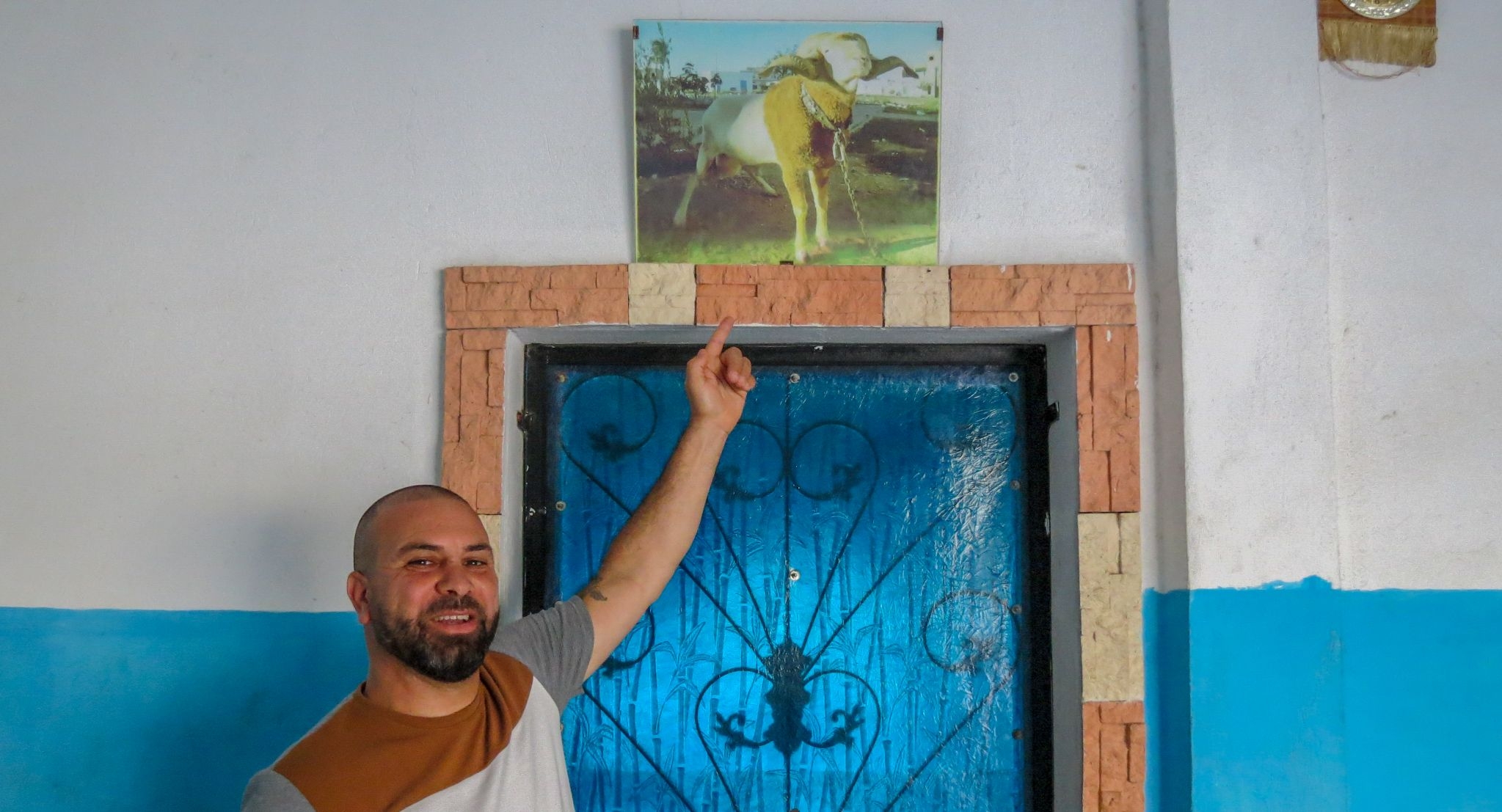
Mongy Labidi has been breeding and training rams since he was 17-years-old. He proudly points to the photo of one of the "champions" he once owned, adding that he "had three, but that was the best one". The first thing he did when he returned to Tunisia in 2008, after spending several years imprisoned on drug-related charges in Italy, was to buy a ram.
"I feel good when I spend time with these animals; it helps keep my mind busy and I feel really charged when I go out on the fighting arena," he says. "My brothers said I was crazy."
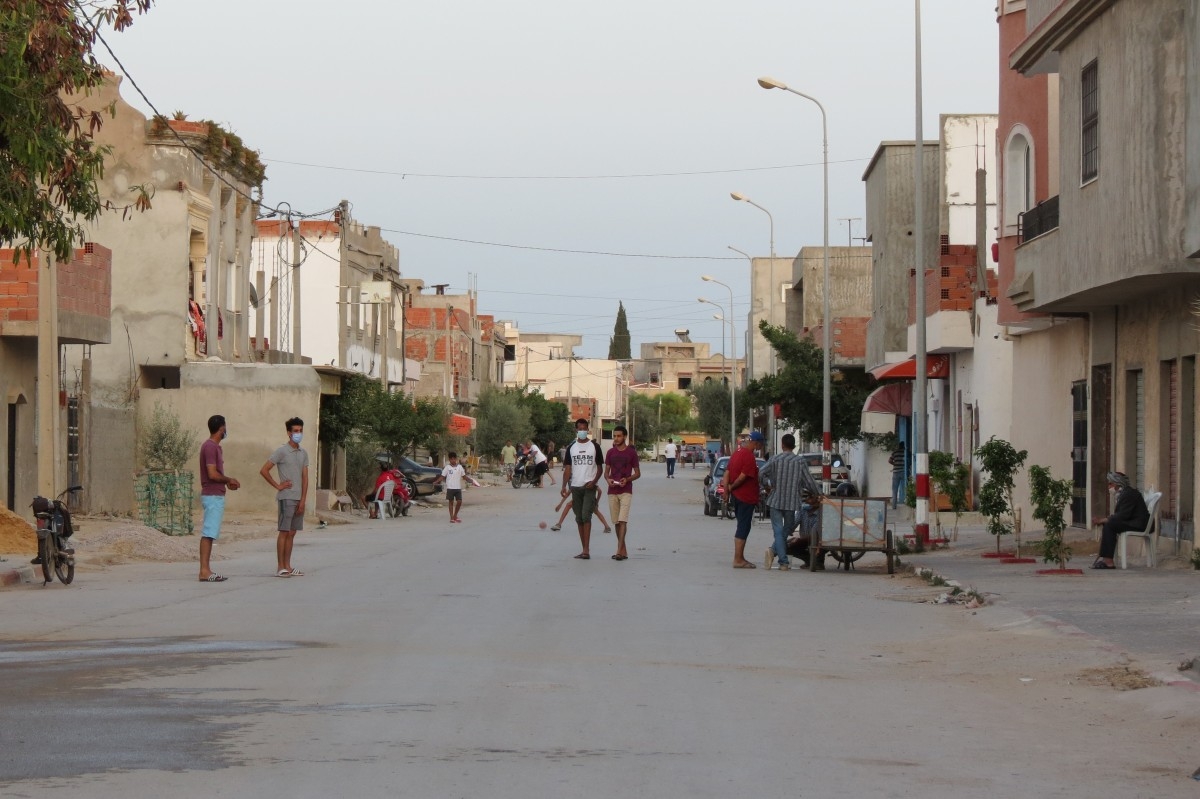
In Tunisia, rams used for combat are not killed unless they lose a fight. In the meantime, their owners can spend as much as the Tunisian minimum monthly salary of around 420 dinars ($152) to feed them. According to Labidi, there are many young people in the country who are passionate about breeding rams because there isn't much else happening: "They have nothing to do [so] they buy some beers and go to watch the fights."
Rams are usually trained outdoors, sometimes several times a day in the run-up to a fight. Still tied-up, the owners incite the rams to headbutt them, further angering them.

For some, like Sophiene Aloui, having a ram is an occasional hobby to spend money on, now that he can afford it. Recently he bought his first two rams to get a taste of the fighting world, keeping them in a shelter that he built at the back of his house. "I really wanted to do this because here, having a ram is not just a tradition but it is in our blood," Aloui says. Such shelters are around two square meters wide and have little or no lighting.
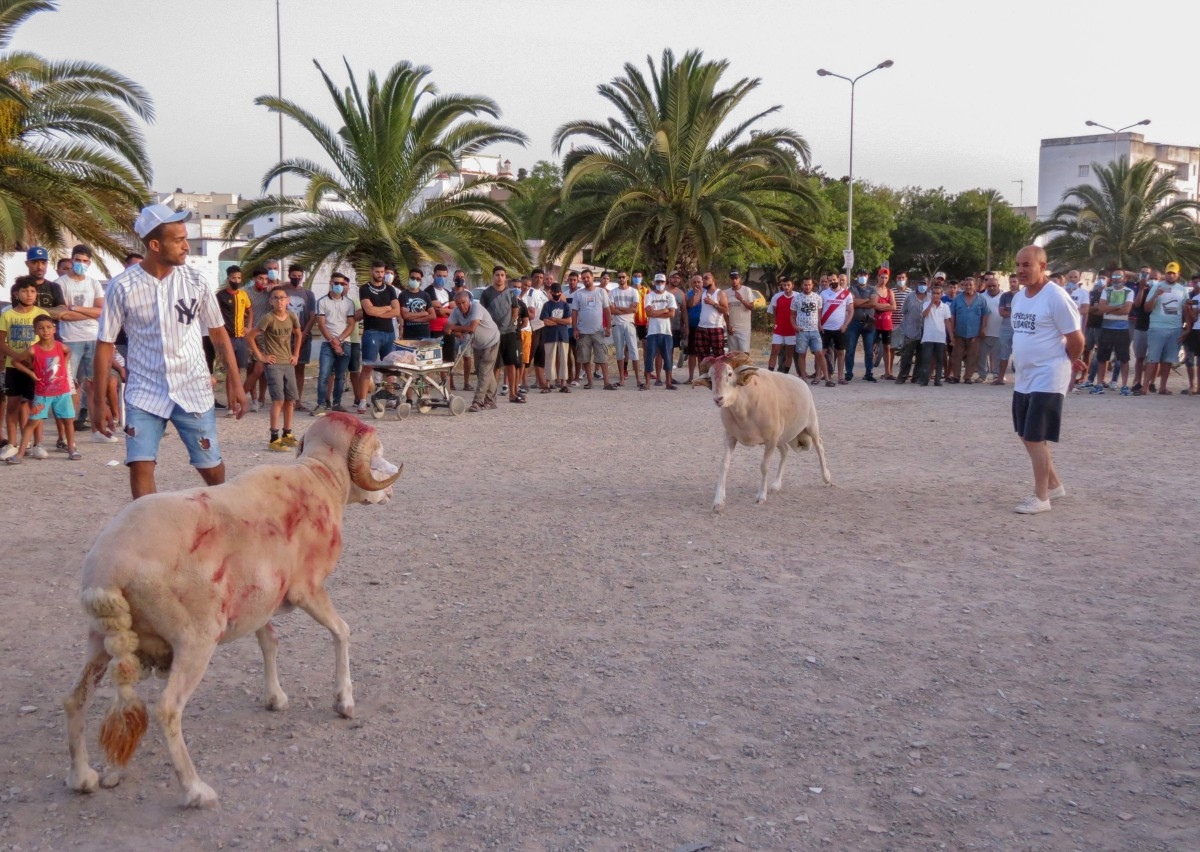
A large crowd gathers to watch a fight one Sunday afternoon in a nearby neighbourhood, on some land next to the main road that runs through El Ouardia, a district of Tunis. A fight lasts from a few minutes to an hour, with the animals constantly headbutting each other until one of them collapses or is fatally wounded.
A referee is often chosen on the spot and there are no rules to the contest, apart from making sure each ram has equal running space. It can get noisy as spectators may not even know the owners and therefore cheer the fight itself, rather than one side or the other.

Khamous Jouida is well known in the ram-fighting scene. He travels around Tunisia to livestream fights on dedicated Facebook pages. In 1975, an official ram-fighting federation was established, although it has since been disbanded. Fights are advertised on social media with aggressive boxing-style posters. "Today, business people and even famous Tunisian footballers have bought rams to show off," says Jouida. "It is a matter of honour and prestige. Someone has even offered 20,000 dinars ($7,200) for a champion ram."
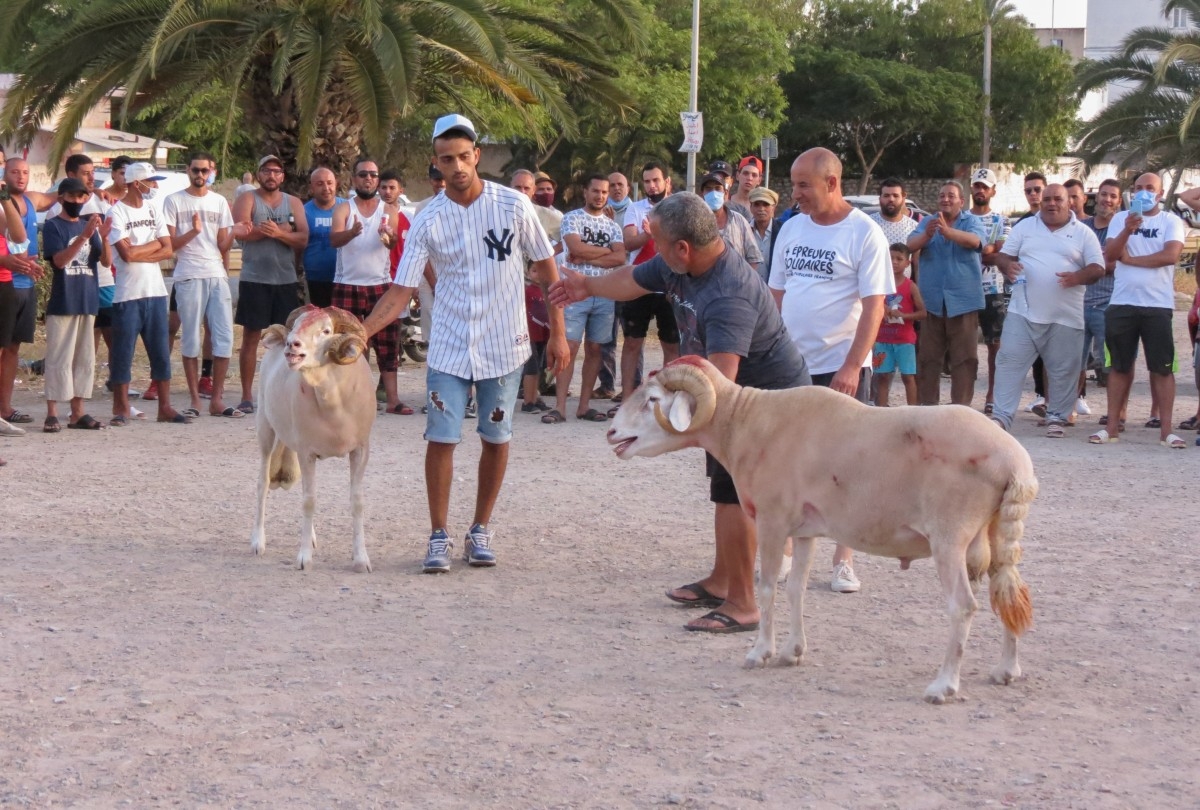
The rams tend to begin bleeding quite soon into the fight and are pulled back in if they try to escape. Eventually they collapse from exhaustion or injury. Ram owners insist that they treat their animals well, although animal rights activists have repeatedly called for the criminalisation of the sport. According to articles 315 and 317 of the Tunisian penal code, a person can be sentenced to 15 days imprisonment and a fine of 4.80 dinars ($1.70) for abusing domestic animals.
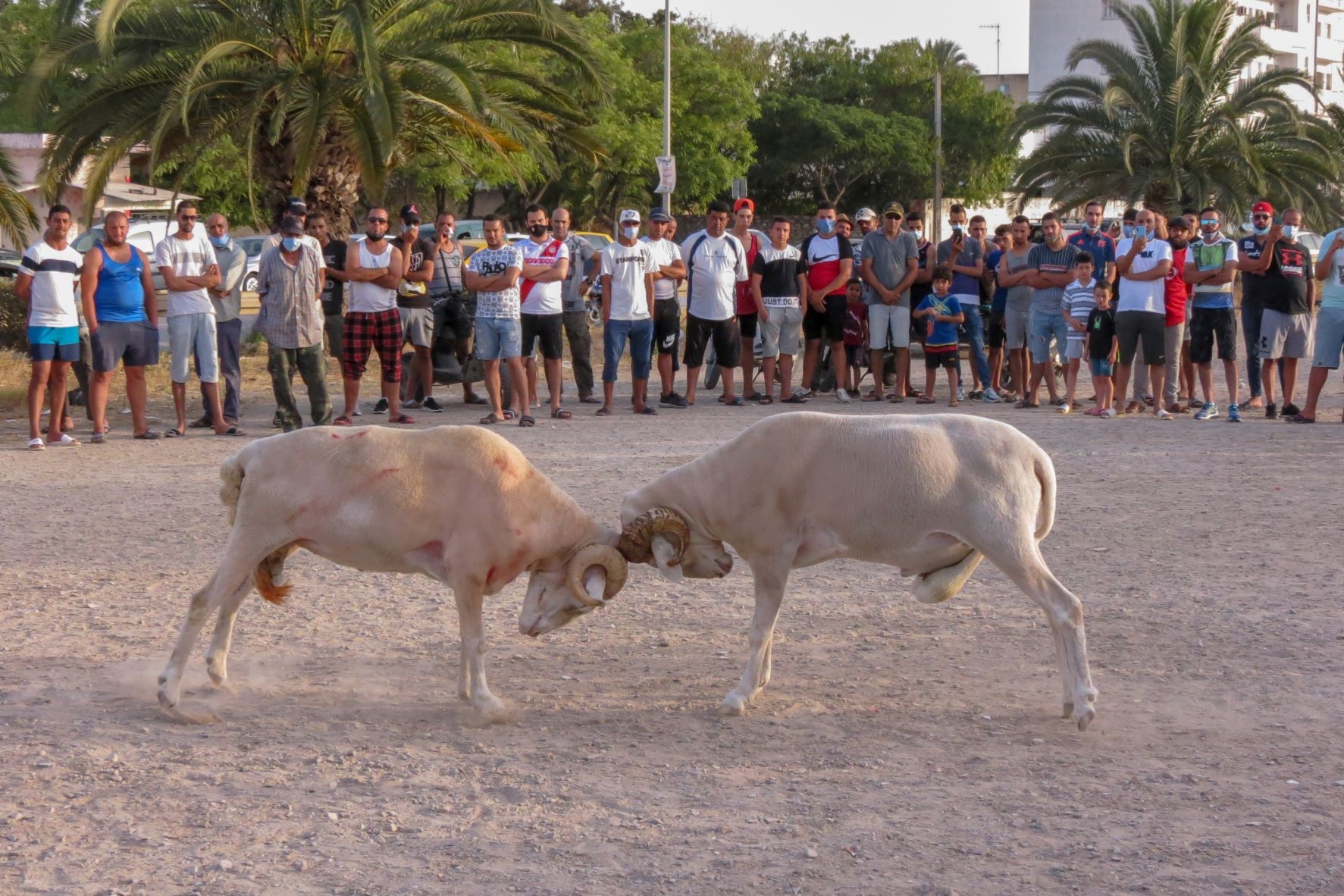
"But there is nothing beyond that," says Rakia Borgi from Tunisia Animals Voice, a group that has launched a petition to change the law and to forbid "all forms of mistreatment, including fights, of stray animals and others species". The petition is scheduled to be presented to the Tunisian parliament in October, but it is currently suspended until further notice because of the ongoing political crisis.

While ram-fighting is most common in the outskirts of Tunis, rams are bred throughout the capital too. In Ezzouhour, a neighbourhood located a few minutes walk away from the famous Bardo museum, Moez Badri keeps his animal in a small rental garage for 150 dinars a month ($54). He feeds the ram three times a day, but other than an occasional photo opportunity with some of the locals, the animal is confined in windowless space and chained "to make him more aggressive", Badri says.

Back in Mohammedia, young people will often stop their football matches if they hear a ram fight is taking place nearby. "Young people go to these events even if they're not really interested in taking part in this practice themselves," says anthropologist Hassen Chaabani. “Although the tradition of ram fights is still ongoing, it is relatively rare in Tunisia."
This article is available in French on Middle East Eye French edition.
Middle East Eye delivers independent and unrivalled coverage and analysis of the Middle East, North Africa and beyond. To learn more about republishing this content and the associated fees, please fill out this form. More about MEE can be found here.


